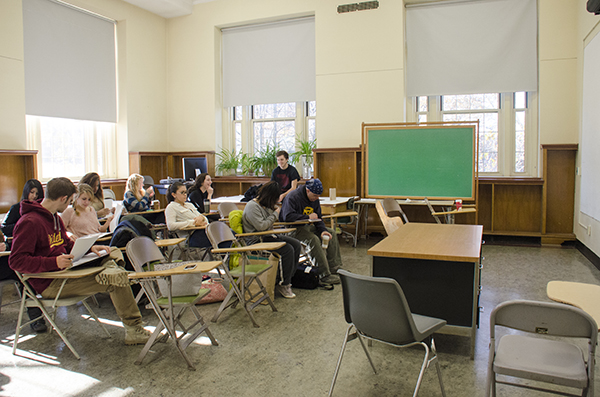

February’s Collective Bargaining Agreement (CBA) signed by New York Gov. Andrew Cuomo’s Office and the United University Professors (UUP), the union representing SUNY faculty, will require all SUNY campuses to implement a Deficit Reduction Leave (DRL) for all UUP represented employees, according to SUNY New Paltz Provost Phillip Mauceri.
As a result, all UUP represented employees will be furloughed for two days and have their salaries reduced accordingly. Full-time faculty must take two days off between Oct. 25, 2013 and March 21, 2014, and adjuncts must take two days off between Oct. 25 and Dec. 19.
New Paltz UUP Chapter President at New Paltz Peter Brown said the union had to accept the agreement because Gov. Cuomo imposed it on the state level.
“It’s taking money away from us to help close the budget cap in New York State, so hopefully it never happens again,” Brown said.
Brown said UUP’s efforts to improve pay for adjunct professors are through labor management meetings, the 5k campaign UUP started in May and the faculty passing resolutions. In addition, six departments and programs have passed the Resolution for Fair Pay Act, which calls for a starting salary of $5,000 for adjunct professors per course.
According to a letter written by the Chair and a associate professor of the communication and media department Jason Wrench to the department’s faculty, furlough days taken by adjunct professors can’t interfere with the required amount of days a course needs to meet in order for students to receive credit.
Brown said adjunct professors don’t receive enough wages compared to full-time faculty and this new policy hurts them even more.
“We’re trying to get the administration to pay adjuncts a living wage and we’re asking for a minimum starting salary of $5,000 per three credit course,” he said.
Mauceri said in comparison to private colleges in the area and the local community college, SUNY New Paltz provides benefits that aren’t offered to adjuncts at the other institutions.
“Adjunct faculty at New Paltz who teach two or more courses qualify for health insurance benefits, beginning with their first semester of teaching and continuing through all subsequent semesters teaching at that level,” he said. “The state pays 88 percent of the costs of the premium for employee coverage and 73 percent of the premium for dependent coverage.”
Brown said he appreciates the professors who don’t give up classes and work without pay for the sake of their students, but is worried about the negative effects it could have in the future.
“I think people should realize that if it’s viewed as being too easy, these two furlough days, that the state will say in the next contract ‘two furlough days with no problem, let’s go to five furlough days or 10 furlough days,’” he said.
Mauceri said he was “not surprised” some professors decided to work without pay in order to help their students and that the students were considered while the new policy was implemented.
“In implementing the DRL requirements of the collective bargaining agreement, we have asked chairs and faculty to do their best to minimize the impact on students as much as possible,” he said.
